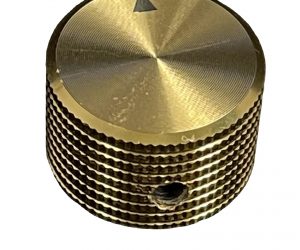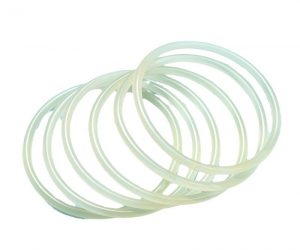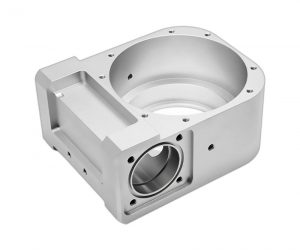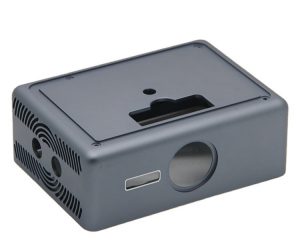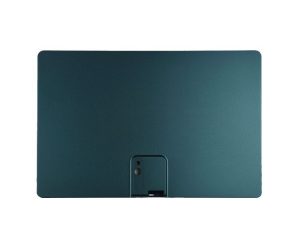The issues you mentioned regarding the die punch breaking easily, iron filings, poor sprouting, and molding problems are indicative of several possible problems in the injection molding process. Let's address each of these issues separately:
- Die Punch Breaking Easily: This could be due to excessive stress on the die punch, caused by factors like improper design, high injection pressure, excessive mold temperature, or poor material selection. It's essential to ensure the die punch material is strong enough to withstand the molding forces and to verify that the design and manufacturing process of the punch are appropriate for the specific application.
- Iron Filings: The presence of iron filings in the molded parts indicates possible contamination of the plastic material or mold. These filings may come from the mold itself or other components used during the molding process. It's crucial to inspect and clean the mold regularly to prevent any contamination from affecting the quality of the molded parts.
- Poor Sprouting: Poor sprouting, or improper gate design, can lead to defects like insufficient filling, flow marks, or even incomplete mold cavity packing. It's essential to ensure proper gate design and positioning to achieve consistent and uniform flow of the plastic material during injection.
- Molding Problems: Molding problems could encompass a wide range of issues such as warping, sink marks, voids, or surface defects. These problems may arise from factors like inconsistent cooling, improper mold venting, incorrect molding parameters, or poor part design. Conducting a thorough analysis of the molding process and addressing each specific issue is crucial for resolving molding problems.
The persistent recurrence of defects in injection molding necessitates a paradigm shift beyond rudimentary troubleshooting. A proactive, multi-faceted approach, spearheaded by seasoned mold engineers and process technicians possessing an intimate understanding of rheology, thermodynamics, and material science, is paramount. Their intervention transcends mere parameter adjustment; it demands a holistic, systems-level analysis.
Firstly, a rigorous diagnostic protocol must be implemented. This involves not only the routine examination of injection speed, pressure, and temperature profiles – a superficial assessment at best – but also a deep dive into the intricacies of melt flow behavior, including shear-thinning effects and potential melt fracture phenomena. Deviations from established process capability indices (PCIs) must be correlated with specific defect morphologies, employing statistical process control (SPC) methodologies to uncover subtle, yet insidious, patterns indicative of underlying systemic issues.
Secondly, mold design, often overlooked as a static entity, demands rigorous scrutiny. Finite element analysis (FEA) should be employed to predict stress concentrations and potential points of failure within the mold structure. This predictive modeling, coupled with detailed examination of gate geometry, runner design, and cooling channel efficacy, allows for the identification of latent design flaws contributing to warping, sink marks, and other undesirable characteristics. Innovative solutions, such as incorporating conformal cooling or implementing advanced venting strategies, may be necessary.
Material selection, far from a simple specification exercise, requires a nuanced understanding of polymer chemistry and its influence on the molding process. The selection criteria must extend beyond basic mechanical properties to encompass factors such as molecular weight distribution, thermal degradation behavior, and susceptibility to degradation under specific processing conditions. Collaboration with materials suppliers to establish rigorous quality control protocols and material traceability is essential.
Finally, process parameter optimization transcends simple trial-and-error adjustments. Employing advanced statistical methods, such as Design of Experiments (DOE), allows for the systematic exploration of the multi-dimensional parameter space, leading to the identification of optimal processing windows that minimize variability and maximize product quality. Real-time process monitoring, utilizing techniques such as in-mold pressure sensing and spectroscopic analysis, provides invaluable feedback for closed-loop control and continuous improvement.
In conclusion, the resolution of injection molding challenges requires a sophisticated, multidisciplinary approach. The reliance on experienced professionals, coupled with the implementation of advanced analytical techniques and a commitment to continuous improvement, is not merely recommended; it is imperative for achieving consistent, high-quality molded parts and avoiding the costly consequences of persistent defects.
The following analysis addresses the multifaceted challenges encountered in die punching, encompassing die breakage, iron filing generation, inadequate sprouting, and flawed molding. Each issue is dissected with a focus on root cause identification and sophisticated remediation strategies.
I. Die Punch Breakage: A Systemic Examination
The facile fracturing of the die punch points to a confluence of factors, demanding a rigorous diagnostic approach beyond simple adjustments. The previously suggested remedies, while partially effective, lack the depth necessary for comprehensive resolution.
a. Geometric Discrepancies: Insufficient closing height and excessive punch cutting edge length are symptomatic of flawed die design or improper setup. Precision measurement and potential die redesign are paramount. Simple height adjustment is insufficient; a comprehensive analysis of the die's geometry is required.
b. Material Misalignment & Stress Concentration: Improper material positioning creates uneven stress distribution, potentially leading to catastrophic failure. This necessitates not only positioning adjustments but a thorough investigation of the feeding mechanism's integrity and capacity to handle the imposed loads. Finite element analysis (FEA) may be required to optimize material flow and stress distribution.
c. Waste Accumulation & Die Degradation: Obstruction of the cutting edge by waste necessitates not only re-drilling but a comprehensive review of the die's waste evacuation system. This may involve redesigning the die's geometry or implementing improved waste removal techniques.
d. Mechanical Instability: Loose fixations and guide misalignments indicate a need for robust clamping mechanisms and precise guide systems. Simple re-threading or tightening may provide temporary relief but fails to address the underlying mechanical instability. A thorough assessment of the entire die assembly's structural integrity is crucial.
e. Punch Plate Misalignment & Clearance Issues: Lateral forces on the punch stem from poor guidance and inadequate clearance. Repairing the clearance is a short-term solution; a complete re-evaluation of the punch plate's design and its interaction with the die is necessary.
f. Interference & Geometric Conflicts: Insufficient punch knife edge length leads to interference and breakage. Mere replacement is insufficient; a comprehensive analysis of the die's geometry and material properties is needed to ensure proper clearance and prevent future failures.
g. Punch Instability & Fixation: Loose fixation of the punch necessitates a robust clamping system that prevents any movement during operation. Simple refixation is insufficient; a thorough investigation into the clamping mechanism's design and functionality is required.
h. Edge Sharpness & Wear: Dull punch edges lead to increased stress and eventual failure. Regrinding is a temporary solution; the selection of appropriate materials with enhanced wear resistance should be considered.
II. Iron Filing Generation: A Material Science Perspective
The presence of iron filings indicates material deformation and failure beyond simple clearance adjustments.
a. Rebar Misalignment: Rebar dislocation requires precise recalculation and adjustment of bending parameters. Simple repositioning is insufficient; a comprehensive understanding of the bending process and material properties is necessary.
b. Clearance & Friction: Insufficient bending clearance leads to excessive friction and material shearing. Grinding may provide temporary relief but fails to address the root cause. A detailed analysis of the bending process and material properties is needed to optimize clearance and minimize friction.
c. Punch Sharpness & Material Fracture: Excessively sharp bending punches promote material fracturing. R-angle trimming is a partial solution; a comprehensive review of the punch's geometry and material selection is needed.
d. Material Deficiency: Insufficient material near the knife edge leads to premature failure. The design must account for material deformation and ensure sufficient material is present throughout the process.
e. Pressing Rib Geometry: Narrow pressing ribs concentrate stress, leading to material failure. Regrinding is only a temporary measure; a redesign of the pressing rib's geometry is necessary.
III. Poor Sprouting & Molding: A Comprehensive Analysis
The problems with sprouting and molding indicate significant flaws in the die design and process parameters.
A. Poor Sprouting:
a. Centering Issues: Misalignment necessitates precise center determination and adjustment. Simple repositioning is insufficient; a comprehensive analysis of the entire process, including the pre-punching operation, is required.
b. Die Clearance & Edge Integrity: Uneven die clearance leads to inconsistent sprouting. Repairing the high edge is a temporary fix; a complete evaluation of the die's geometry and manufacturing tolerances is necessary.
c. Bottom Hole Specifications: Incorrect bottom hole dimensions lead to inconsistent sprouting height. Simple diameter adjustments are insufficient; a comprehensive analysis of the entire sprouting process, including material flow and deformation, is required.
B. Poor Molding:
a. Punch Sharpness & Material Cracking: Excessive sharpness leads to material cracking. R-angle trimming is a partial solution; a comprehensive analysis of the punch's geometry and material selection is needed.
b. Punch Length & Material Deformation: Insufficient or excessive punch length leads to incomplete or excessive material deformation. Simple length adjustments are insufficient; a detailed analysis of the material's behavior under stress and the die's geometry is required.
c. Material Deficiency & Stress Concentration: Insufficient material leads to stress concentration and cracking. Simply adding material is insufficient; a thorough analysis of the material properties and the forming process is needed.
d. Positioning & Feeding Errors: Improper positioning leads to inconsistent molding. Adjusting the feeding device is a partial solution; a comprehensive analysis of the entire process, including material flow and deformation, is required.
e. Die Gap & Material Deformation: Insufficient die gap leads to material deformation and cracking. Simple gap adjustments are insufficient; a detailed analysis of the material's behavior under stress and the die's geometry is required.
In conclusion, addressing these issues requires a multifaceted approach that goes beyond simple adjustments. A rigorous analysis incorporating material science, mechanical engineering principles, and potentially FEA is crucial for achieving optimal performance and preventing future failures.
